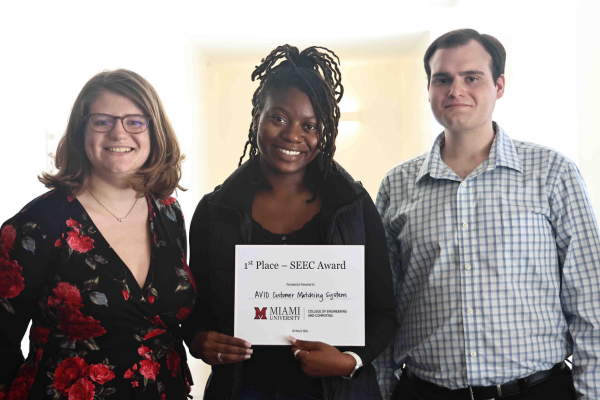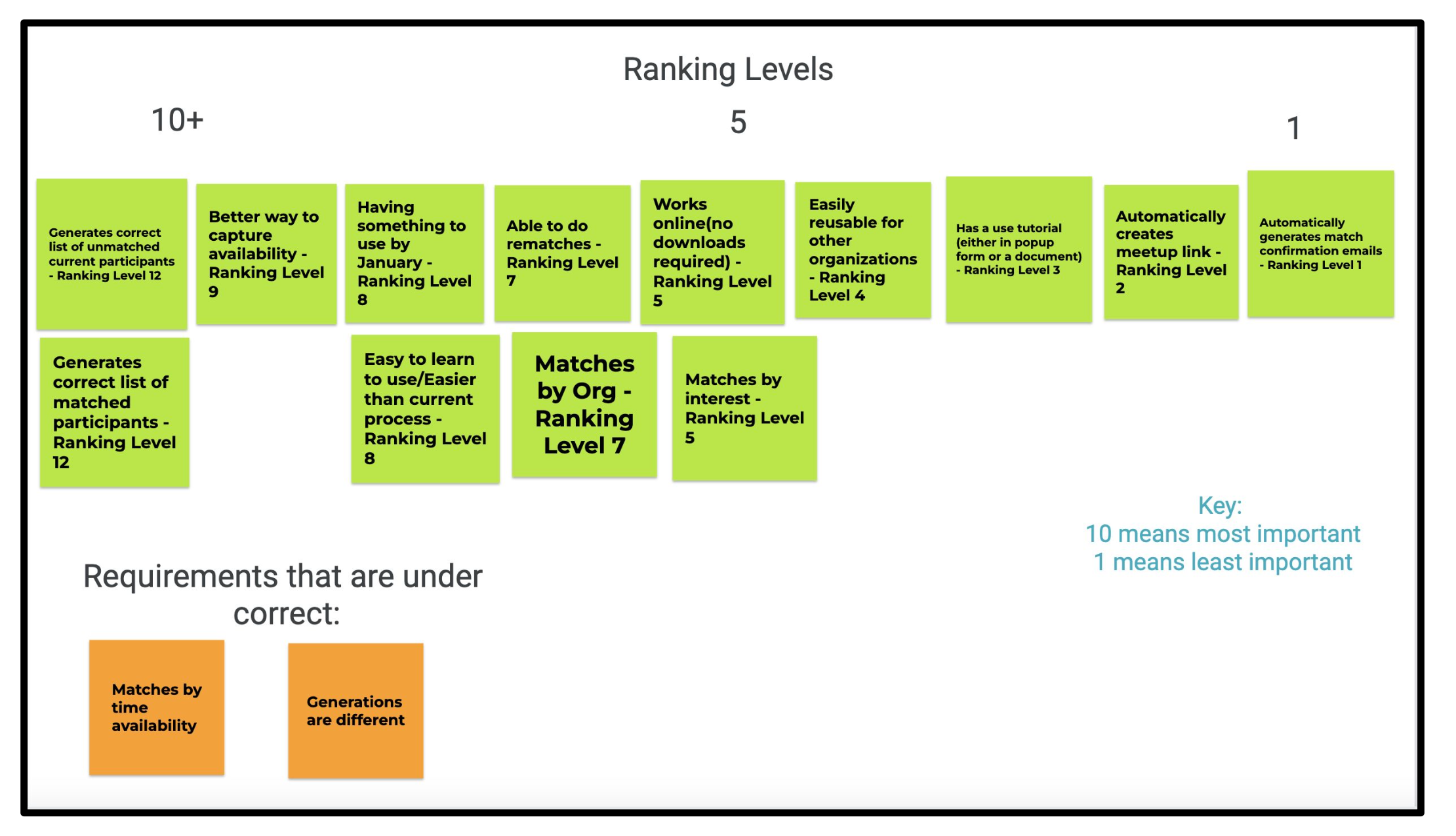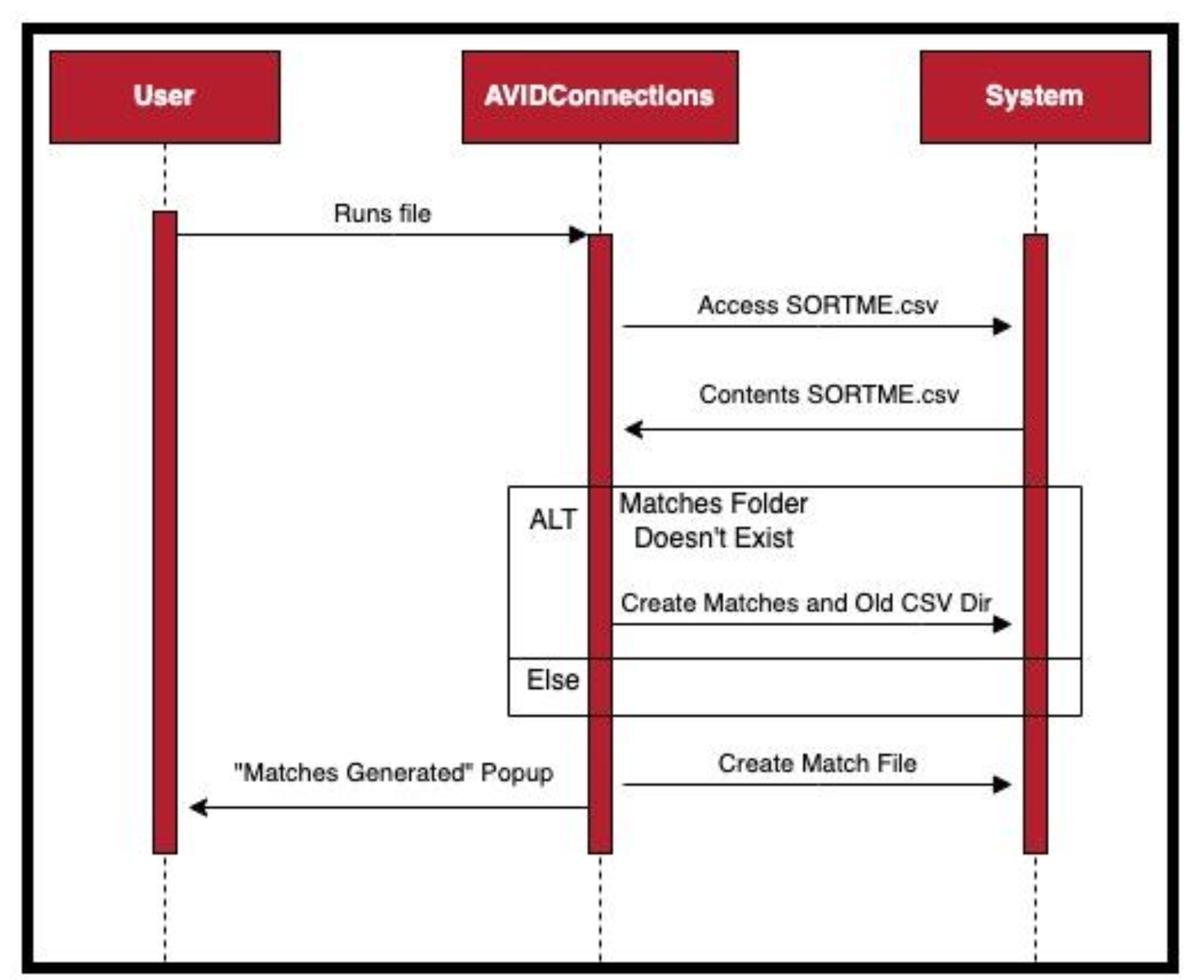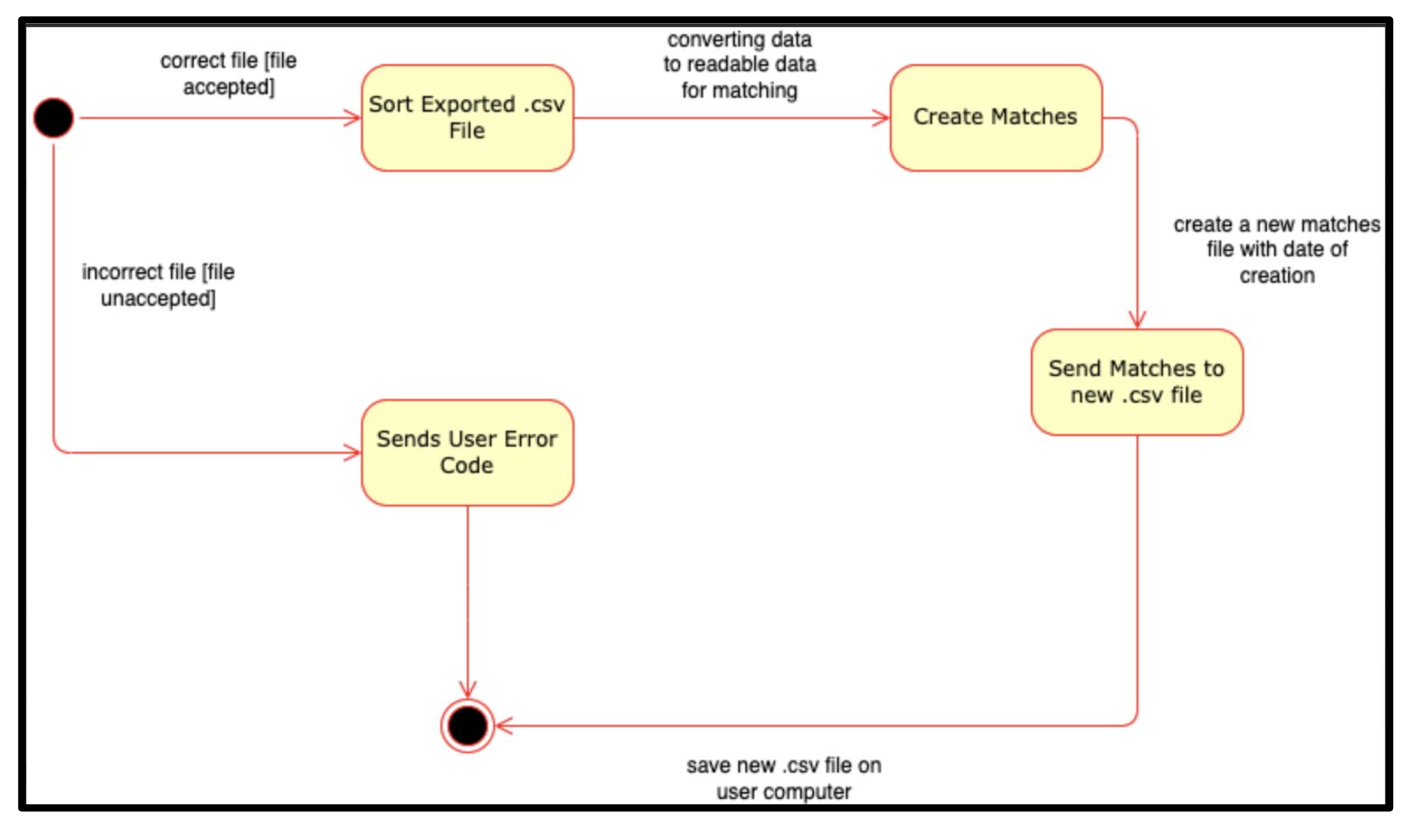Helping ScrippsAVID more effectively connect generations
For their Senior Design Project called AVIDConnections, three graduating CEC seniors won first place in the Socially Engaged Engineering and Computing category.

Helping ScrippsAVID more effectively connect generations
Three recent CEC graduates have successfully connected generations through the power of software engineering.
Rylee Domonkos, Morghan Jones, and Alex Myron, all Software Engineering majors, recently crossed the stage as graduates of CEC's Department of Computer Science and Software Engineering. But prior to becoming CEC alumni, they collaborated a Senior Design Project called AVIDConnections: Generations Connected.
This project was awarded first place in the SEEC (Socially Engaged Engineering and Computing) category at Miami University College of Engineering and Computing.
What is a Senior Design Project?
At CEC, every student completes a Senior Design Project in their final year as an undergraduate. In these projects, students and companies partner to solve an engineering or computing problem. Students gain real-world design and project experience while working through a design process. Businesses interact and engage with the students and benefit from the technical skills and expertise of the students and the faculty advisor while creating close relationships with the students for future work.
A challenge to build more connections
For their project, Rylee, Morghan and Alex worked with the Scripps Gerontology Center, as a client. Scripps Gerontology Center is a Miami University center housed in the College of Arts and Sciences. One of their flagship programs, Opening Minds through Art, or OMA, is a research-backed intergenerational art program which supports people with dementia by pairing them up with volunteers for the purpose of creating art.
During the COVID-19 pandemic, a virtual extension to OMA was created called ScrippsAVID. AVID stands for Arts-based, Virtual, Intergenerational, and Dementia-friendly. Through ScrippsAVID, the team at Scripps can bring the benefits of OMA to more people from the comfort of their own homes. ScrippsAVID functions by matching older participants with younger participants who have matching time availability. Once these intergenerational participants are matched, they can meet virtually and create art together on their schedule.
The challenge, or problem, posted to Rylee, Morghan, and Alex was that up to this point, the ScrippsAVID pairing process was performed manually based on a limited number of data points. This was not only time-consuming, but it limited the number of intergenerational pairs that could be made, thereby limiting the number of meaningful connections possible. Responding to this challenge, the software engineering trip made a goal to effectively automate the ScrippsAVID pairing process within the parameters of their business model.
Meeting 16 client requirements
Using the IEEE Standard for Software Quality Assurance Processes, Rylee, Morghan and Alex worked with their client, ScrippsAVID and the Scripps Gerontology Center, to first identify 16 requirements for the tool they would create. Per these requirements, a successful matching tool would perform the following functions:
-
Generates correct list of unmatched current participants
-
Generates correct list of matched participants
-
Matches by time availability
-
Generations are different
-
Generates meetup name
-
Better way to capture availability
-
Automatically creates meetup link
-
Easy to learn to use/Easier than current process
-
Able to do rematches
-
Matches by organizations
-
Works online (no downloads required)
-
Matches by interest
-
Easily reusable for other organizations
-
Has a use tutorial (either in popup form or a document)
-
Automatically creates meetup link
-
Automatically generates match confirmation emails
After working with their client to rank the requirements (see Figure 1, below), the student team began work creating a new tool, which they called AVIDConnections.
 Figure 1: Requirement Priority Ranking
Figure 1: Requirement Priority Ranking
Source: AVIDConnections Student Team Presentation
Getting to work
Using the ranked requirements, the AVIDConnections student team (Rylee, Morghan, and Alex) designed a sequences diagram (Figure 2, below) and a state diagram (Figure 3, below) in order to show how they planned to meet each of their client's requirements. Sequence and state diagrams are both examples of Unified Modeling Language (UML), which is a general-purpose modeling language used in the field of software engineering to help software engineers visualize the design of a system.
 Figure 2: AVIDConnections Sequence Diagram
Figure 2: AVIDConnections Sequence Diagram
Source: AVIDConnections Student Team Presentation

Figure 3: AVIDConnections State Diagram
Source: AVIDConnections Student Team Presentation
Creating these two diagrams allowed the AVIDConnections team to brainstorm ways to approach the problem posed by their client. The team decided to create both a Minimum Viable Product and a Version 1 for their tool. They used the IEEE Standard for System, Software, and Hardware Verification and Validation, and conducted internal tests as well as tests with their target user to ensure AVIDConnections met the requirements, user experiences, and user interface principles requested by the client.
Results
Using the IEEE Standards andUnified Modeling Language processes, the AVIDConnections team was able to successfully create the AVIDConnections tool, along with documentation for their client to support user experience after the team had graduated.
The AVIDConnections greatly supports the client matching process, allowing ScrippsAVID and the Scripps Gerontology Center to strengthen their mission virtually connecting generations through art.